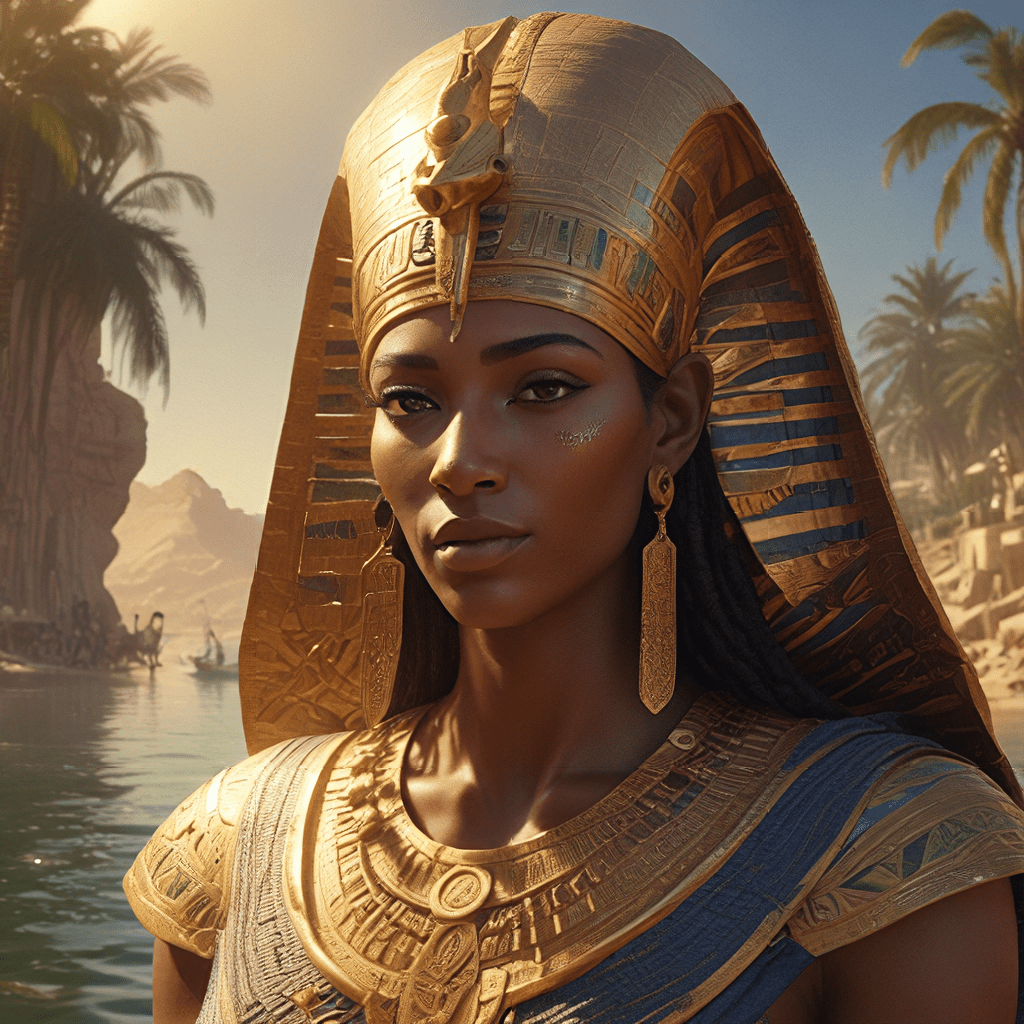## The God of the Nile: The Life-Giving Force of Nature
1. Introduction: The Nile River – A Lifeline for Ancient Egypt
Imagine a world where the very existence of your civilization hinges on a single river. This was the reality for ancient Egyptians, who worshipped the Nile as their lifeblood. Flowing for over 6,650 kilometers (4,132 miles) through eleven countries, the Nile provided more than just water; it was the foundation of their culture, economy, and very way of life. The river’s annual floods brought fertile silt, replenishing the land and ensuring bountiful harvests. In essence, the Nile was not merely a river – it was an extension of the divine, a symbol of life and renewal.
2. The Nile: Beyond a River
The Nile’s importance went far beyond providing drinking water and sustenance. It was a vital artery for trade and transportation, connecting various regions of ancient Egypt. Imagine bustling markets along the riverbanks, where merchants exchanged goods and ideas, making the Nile a hub of commerce and cultural exchange. Its waters carried the weight of their world: from transporting building materials for monumental structures like the pyramids to ferrying the deceased to their final resting place. The Nile was a constant presence in their lives, a powerful force that shaped their beliefs, their art, and their very understanding of the world.
3. Hapy: The God of the Nile
In the rich tapestry of Egyptian mythology, the Nile wasn’t just a natural phenomenon; it was personified in the form of Hapy, the god of the Nile. Hapy represented the life-giving power of the river, embodying its fertility, abundance, and the annual flood that sustained their crops. He was a protector of the Egyptian people, ensuring their prosperity and guarding against dangers like drought or famine. Ancient Egyptians believed that Hapy embodied the divine force that brought them life and ensured their survival.
4. Hapy’s Appearance and Symbolism
Hapy was typically depicted as a plump, jovial figure with a large belly, symbolizing abundance and prosperity. He wore a double crown, representing Upper and Lower Egypt, and held lotus flowers, signifying the river’s fertility and regenerative power. His blue skin reflected the rich, fertile mud of the Nile, while the papyrus plants adorning his headdress symbolized the flourishing vegetation along the riverbanks. Hapy’s imagery was a visual reminder of the Nile’s transformative power and the bountiful blessings it bestowed upon the Egyptian people.
5. The Annual Flood: A Divine Gift
The Nile’s annual flood was a defining event in ancient Egyptian life, a time of both anticipation and reverence. Each year, the river would rise, inundating the surrounding land and depositing a layer of rich, fertile silt that revitalized the soil. This cycle of flooding and renewal was seen as a divine gift from Hapy, ensuring a bountiful harvest and the prosperity of the nation. The Egyptians viewed the annual flood as a testament to Hapy’s benevolent power, a reminder of their dependence on the river and their need to honor its life-giving force.
6. Rituals and Offerings to Hapy
The ancient Egyptians celebrated the Nile’s vital role with elaborate rituals and offerings to Hapy. They held festivals dedicated to the god, offering prayers and sacrifices to seek his favor for a successful flood and a bountiful harvest. These ceremonies brought the community together, reinforcing their collective dependence on the Nile and their shared devotion to Hapy. The Egyptians believed that by honoring Hapy, they could ensure the continued flow of prosperity and abundance, securing their future and the well-being of their nation.
7. Hapy’s Influence on Egyptian Art and Literature
Hapy’s influence extended beyond religious rituals. He became a prominent figure in Egyptian art and literature, a testament to his enduring significance in their culture. Hapy was depicted in numerous murals, sculptures, and reliefs, often alongside other deities or scenes of daily life. He was a constant reminder of the Nile’s importance and the divine power that sustained their civilization. His image became synonymous with life, abundance, and the cyclical nature of the universe. Literary works also reflected Hapy’s enduring impact, weaving his legend into their stories and poems, further solidifying his place in Egyptian mythology.
8. The Legacy of Hapy: Beyond Ancient Egypt
Even though the ancient Egyptian civilization has long passed, the legacy of Hapy and the Nile’s importance lives on. The reverence they held for this powerful river echoes in our own understanding of the natural world. The Nile continues to be a vital water source for millions of people, its waters nourishing the land and sustaining life. Though the rituals and offerings may have faded, the enduring symbolism of Hapy and his connection to life, abundance, and renewal still resonates, reminding us of the vital role rivers play in our world.
9. The Nile: A Symbol of Life, Today
The Nile’s story is a testament to the enduring power of nature and the profound connection between humanity and the natural world. The river’s journey through time, from ancient Egypt to the present day, continues to inspire awe and wonder. The Nile’s waters flow on, carrying the echoes of ancient myths and the hopes and dreams of future generations. In the end, it is a reminder that even amidst the ever-changing tides of time, the essential elements of life – fertility, renewal, and abundance – remain constant, connected to the pulse of the natural world.




